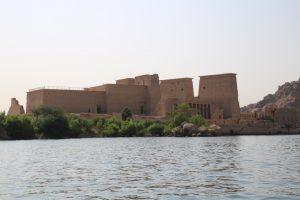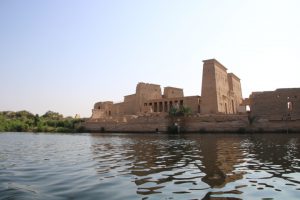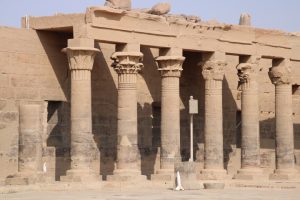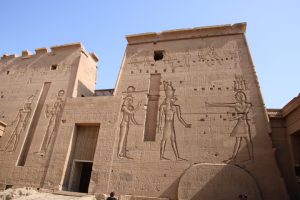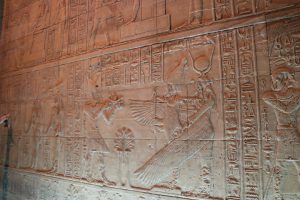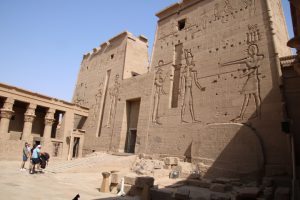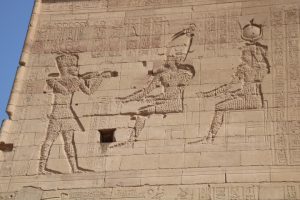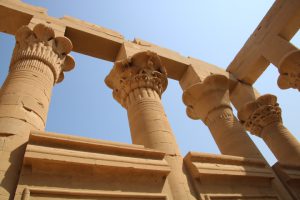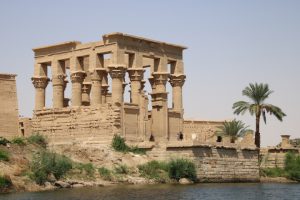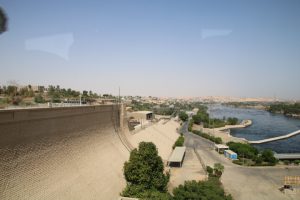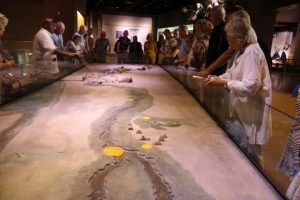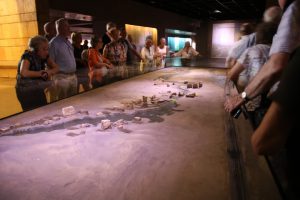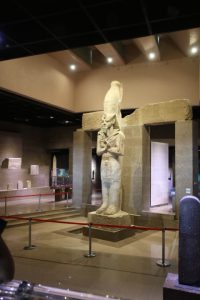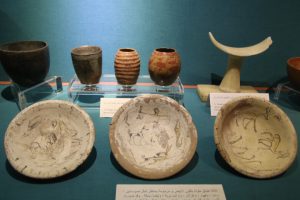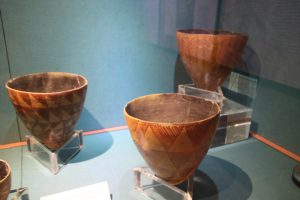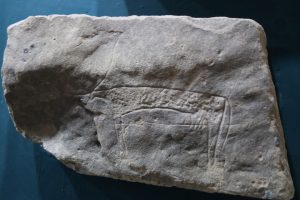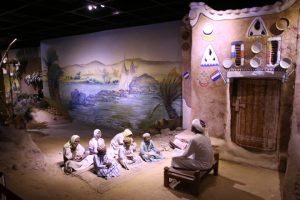Aswan is at the northern end of the first cataract (waterfall) that marked what most historians understand to be Egypt’s southern frontier. However, in very ancient times, there were people living and trading around this town and it is from the remains of their domestic artefacts that we can understand how these peoples provided the launch pad for the successful Pharaonic periods.
We started our early morning exploration with a visit to the Philae Temple which today is on an island surrounded by the waters of the reservoir made in 1902 after the construction, by the British, of the Aswan Dam at the first cataract.
The temple was flooded for 6 months each year and the water stains can still be seen on the walls and pillars. Following the construction of the Aswan High Dam in the 1960s the increasing height of the water was threatening the temple with extinction. Between 1972 and 1980 the temple complex was disassembled stone by stone and reconstructed on the Agilika Island which is 20 m higher than the temple’s original site.
The earliest surviving remains at Philae date to around 380 BC which makes it quite modern in Egyptian terms. The temple was dedicated to the goddess Isis, wife of Osiris and mother of Horus, with their story represented on the walls of the temple. Many of the inner chambers are rich in symbolic imagery. The cult of Isis was most popular by the time of the Romans and even reached Britain as late as 550 AD, well after the Roman Empire embraced Christianity. Some of the work of these early Christians is visible in the change to the structure and the defacing of the reliefs.
Later we visited the Nubian Museum which has a wealth of prehistoric, pre-Pharaonic, Coptic Christian and Islamic art displays that illustrate the sophistication of the workmanship in domestic and religious artefacts at such an early time in the civilisation of the Nile.
